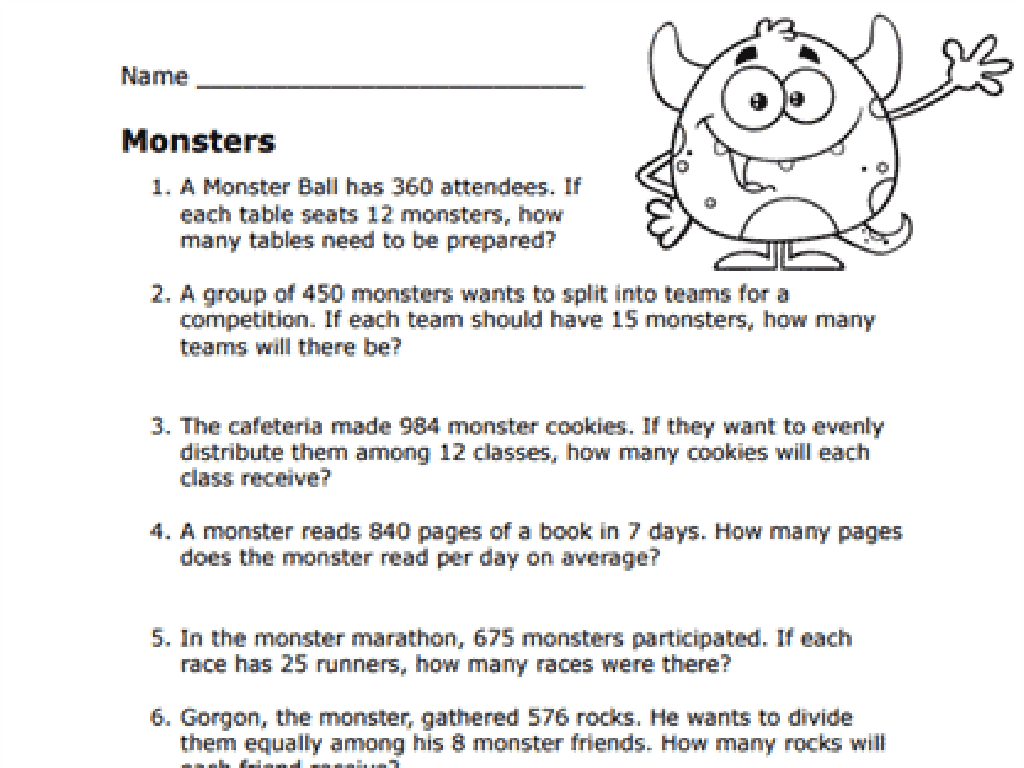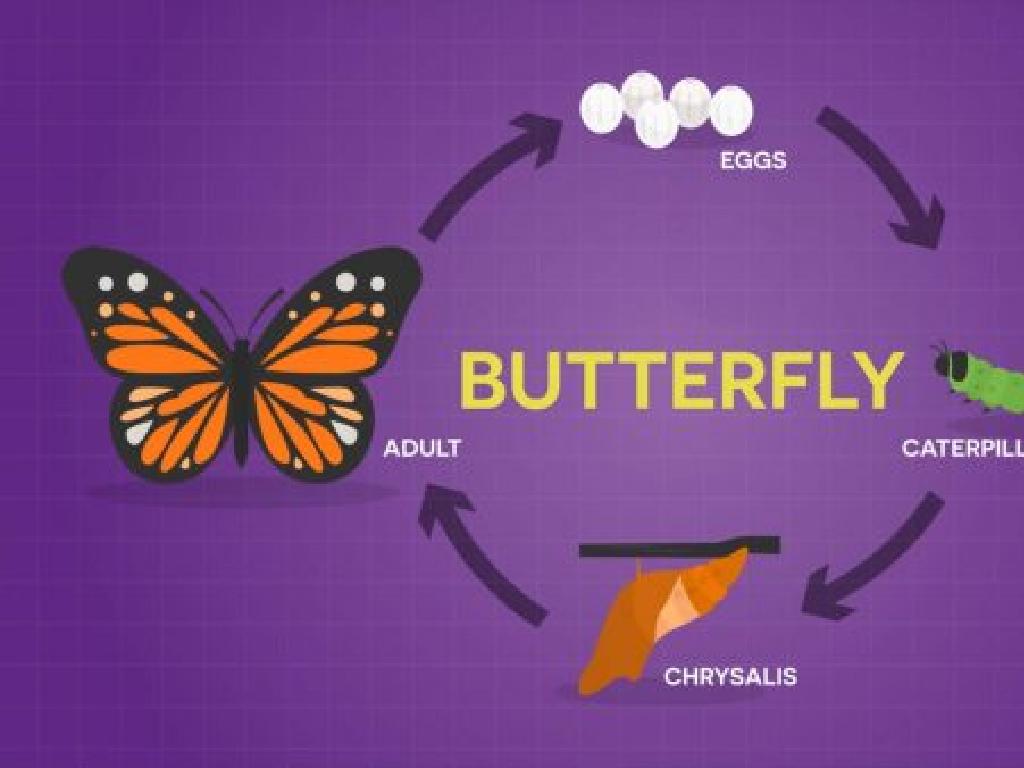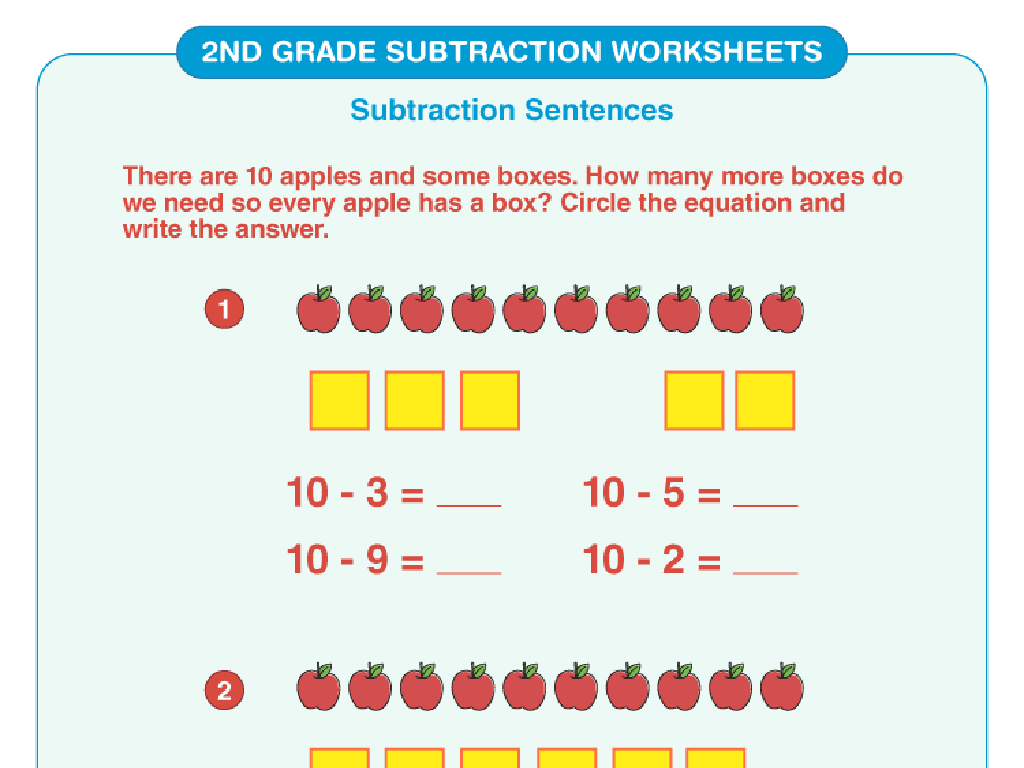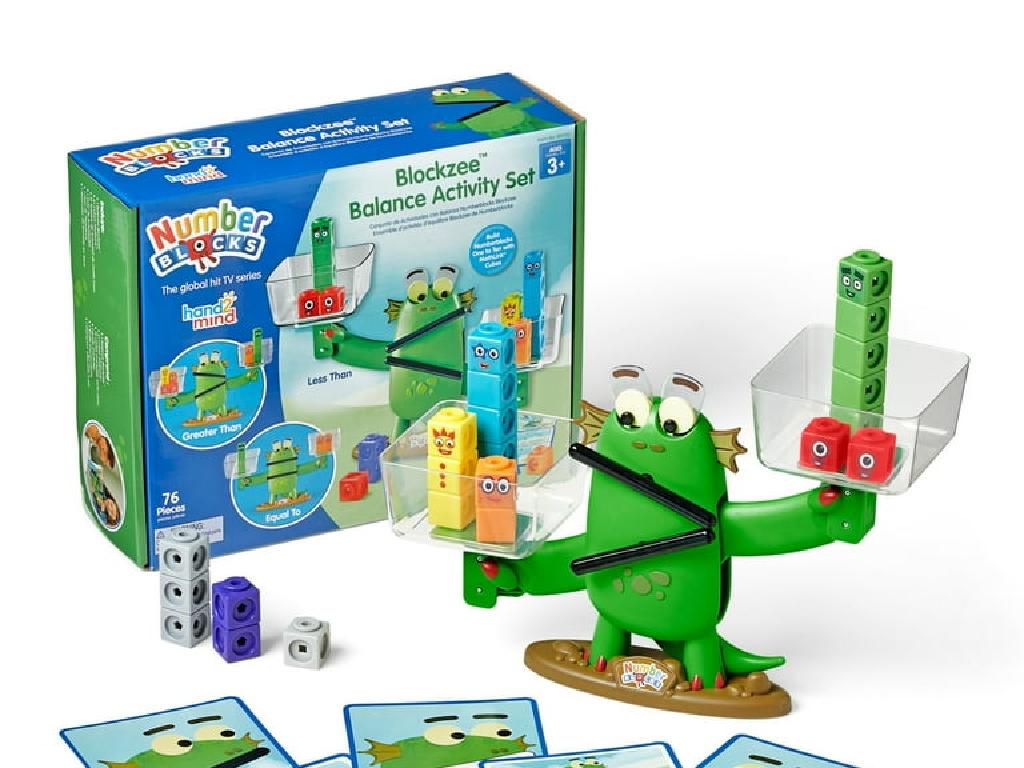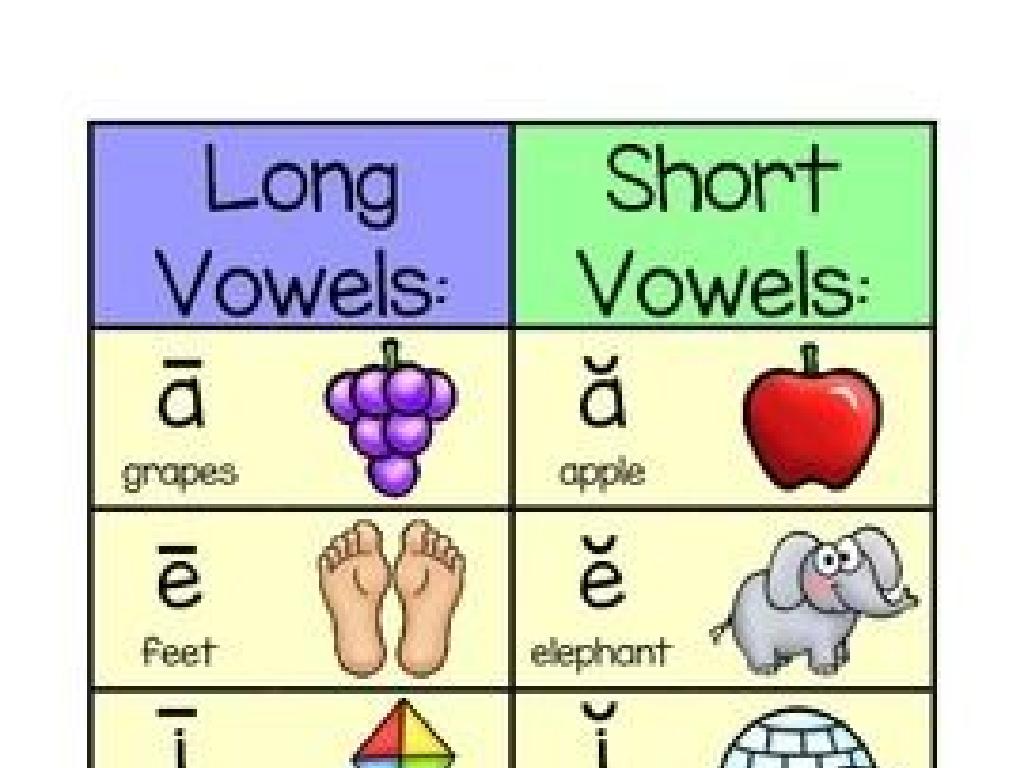Form And Use The Irregular Past Tense: Set 1
Subject: Language arts
Grade: Third grade
Topic: Verb Tense
Please LOG IN to download the presentation. Access is available to registered users only.
View More Content
Exploring Irregular Past Tense Verbs
– Discover special verb group
– What are Irregular Past Tense Verbs?
– Verbs that don’t follow usual -ed ending
– How they differ from regular verbs
– They change form completely or stay the same
– Examples of irregular verbs
– ‘Go’ becomes ‘went’, ‘buy’ becomes ‘bought’
|
This slide introduces the concept of irregular past tense verbs to third-grade students. Begin by explaining that while most verbs add -ed to form the past tense, irregular verbs do not follow this pattern. Highlight the importance of memorizing these because they are common in everyday language. Provide examples and contrast them with regular verbs to show the difference. Encourage students to think of verbs they already know and consider how they might be irregular. Prepare to engage the class with activities where they can practice forming and using irregular past tense verbs in sentences.
Regular vs. Irregular Verbs
– Regular verbs add ‘ed’ for past tense
– Irregular verbs change differently
– Example: ‘jump’ turns to ‘jumped’
– ‘Jump’ follows the regular pattern by adding ‘ed’
– Example: ‘go’ changes to ‘went’
– ‘Go’ is irregular, so it doesn’t follow the ‘ed’ pattern
|
This slide introduces the concept of regular and irregular verbs to third-grade students. Regular verbs follow a simple rule for the past tense: just add ‘ed’ to the base form. However, irregular verbs don’t follow this pattern and change in different ways. Provide clear examples to illustrate the difference. ‘Jump’ is a regular verb, so we simply add ‘ed’ to make it ‘jumped’. On the other hand, ‘go’ is an irregular verb and becomes ‘went’ in the past tense. Encourage students to think of more examples and to understand that irregular verbs need to be memorized as they do not follow a set rule.
Irregular Past Tense Verbs: Set 1
– Understanding irregular verbs
– Verbs that don’t follow regular rules
– ‘Run’ changes to ‘ran’
– Example: I run every day, I ran yesterday
– ‘Come’ changes to ‘came’
– Example: We come to school, we came yesterday
– Irregular verbs don’t add ‘-ed’
|
This slide introduces the concept of irregular verbs in the past tense, which are common in English and do not follow the typical ‘-ed’ ending rule. Start by explaining that irregular verbs change in unique ways from present to past tense. Provide examples with ‘run’ and ‘come’ to illustrate the change in form. Emphasize that these verbs need to be memorized as they do not have a set pattern. Encourage students to think of other verbs they know and ask them to try converting them into past tense. Prepare a list of common irregular verbs for practice and plan activities where students can use these verbs in sentences to reinforce their learning.
Using Irregular Verbs in Sentences
– Form sentences with irregular past tense
– Example: ‘Yesterday, I ran to the store.’
– ‘run’ changes to ‘ran’ in past tense
– Practice changing sentence tenses
– Change ‘I run to the store’ to ‘I ran to the store’
– Understand past tense usage
– Recognize when to use past tense in a story
|
This slide introduces students to the concept of using irregular past tense verbs in sentences. Start by explaining that irregular verbs do not follow a set pattern when changing from present to past tense. Use clear examples to show how verbs change form. Encourage students to practice by taking sentences in the present tense and converting them to the past tense. Emphasize the importance of context in determining the correct tense to use, such as when talking about actions that happened yesterday or last week. Provide additional examples and create a classroom activity where students can work in pairs or groups to convert sentences and share their answers.
Irregular Verb Match-Up
– Match present to past tense
– Example: ‘sing’ becomes ‘sang’
– ‘sing’ in the past tense is ‘sang’
– Interactive board activity
– Drag and drop verbs to match
– Engage with the verb pairs
– Work with classmates to find matches
|
This slide introduces an interactive class activity focused on matching present tense verbs to their irregular past tense forms. Begin by explaining that irregular verbs do not follow the regular ‘-ed’ ending rule in their past tense. Use ‘sing’ as an example to show how it changes to ‘sang’. Set up an interactive matching activity on the board where students can come up and drag the present tense verb to its matching past tense form. Encourage participation and teamwork as students engage with the activity. Possible variations of the activity could include a timed challenge, team competition, or pairing up students to work together. The goal is to reinforce the learning of irregular past tense verbs through a fun and engaging exercise.
Story Time: Irregular Past Tense Verbs
– Listen to a story with irregular verbs
– Spot the irregular past tense verbs
– Find verbs that don’t follow regular ‘-ed’ ending
– Discuss the author’s verb choice
– Why did the author use ‘sang’ instead of ‘singed’?
– Understand verb usage in stories
– How do these verbs affect the story’s flow?
|
This slide is designed to engage third-grade students in identifying and understanding the use of irregular past tense verbs within the context of a story. As the story is read aloud, students should listen carefully and pinpoint verbs that do not follow the standard ‘-ed’ ending pattern for past tense. Encourage them to think about the verbs’ meanings and why the author might have chosen them, considering how they contribute to the story. After the reading, facilitate a discussion to deepen their comprehension of irregular verbs and their impact on narrative language. This interactive approach helps solidify their grasp of irregular past tense verb forms in a memorable and enjoyable way.
Create Your Own Story with Irregular Past Tense Verbs
– Write your own short story
– Include 5 irregular past tense verbs
– Verbs like ‘went’, ‘saw’, ‘took’, ‘gave’, ‘felt’
– Exchange stories with a classmate
– Discuss the verbs used in your stories
– Talk about how these verbs fit into your story
|
This activity is designed to help students practice using irregular past tense verbs in a fun and creative way. By writing their own stories, students can contextualize these verbs and understand their usage better. Encourage them to think of actions that happened in the past and describe them using irregular past tense verbs. After writing, students will partner up to read each other’s stories, providing an opportunity to see how their peers use the same grammatical structures. This peer review process will reinforce their learning and help them correct any mistakes. As a teacher, facilitate the discussion by asking questions about the verbs used and offering guidance on correct usage.
Class Activity: Verb Tense Treasure Hunt
– Let’s play a treasure hunt game!
– Find hidden verbs around the classroom
– Create past tense sentences with verbs
– Found ‘run’? Write ‘Yesterday, I ran to the park.’
– Work together and have fun learning
|
This activity is designed to make learning irregular past tense verbs engaging. Hide cards with base form verbs around the classroom before the class starts. Divide the class into small groups and give each a bag to collect their verb cards. Once they find a verb, they should work together to correctly use it in a past tense sentence. For example, if they find ‘run’, they could write ‘Yesterday, I ran to the park.’ Encourage creativity in sentence formation. This activity helps reinforce the concept of irregular verbs by providing a physical and collaborative learning experience. Possible verbs to hide: run, sing, speak, write, drive, fly, swim, take, shake, give.
Review and Practice: Irregular Past Tense
– Recap today’s irregular verbs
– We learned verbs like ‘go’ becomes ‘went’
– Take a practice quiz
– Test your knowledge with a fun quiz
– Look ahead to more verbs
– More tricky verbs to learn!
– Get ready for tomorrow
|
This slide aims to consolidate the day’s learning on irregular past tense verbs. Start with a quick review of the verbs covered in the lesson, such as ‘go’ turning into ‘went’, and ‘buy’ becoming ‘bought’. Follow this with an interactive practice quiz to test the students’ understanding and retention of the irregular verbs. Provide encouragement and hints as needed. Finally, generate interest for the upcoming lesson by mentioning that there are more irregular verbs to explore, ensuring students understand that mastery comes with practice. The teacher should prepare different examples of irregular verbs to present tomorrow for a diverse learning experience.

